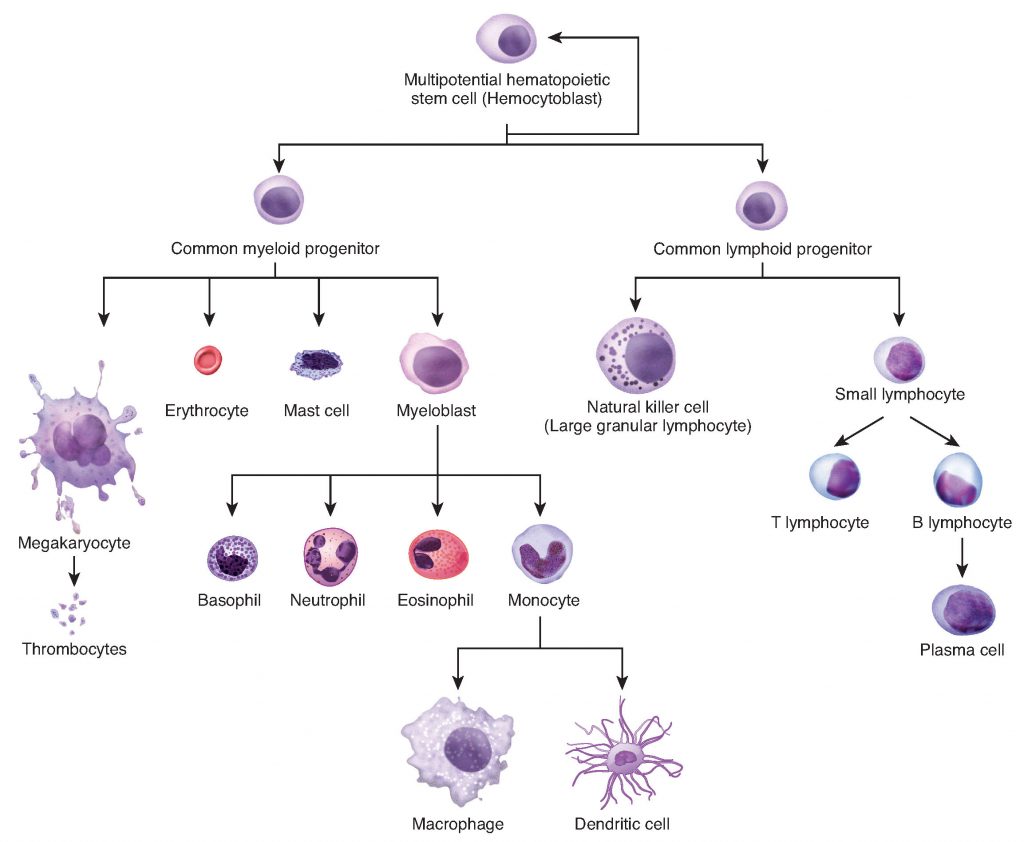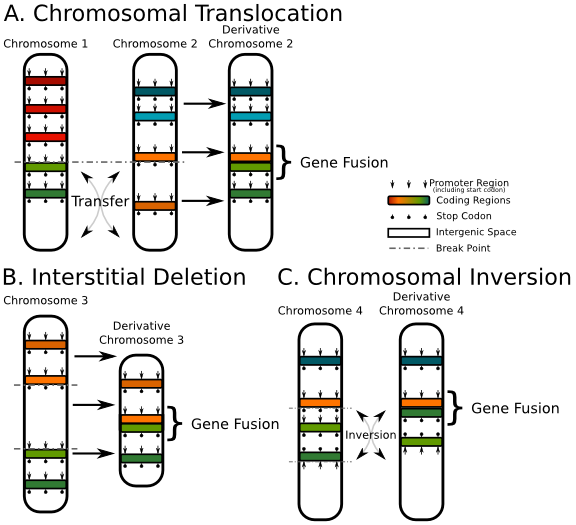Stem cells are truly a fascinating advantage to our complex bodies. They have the astounding potential to provide us with any type of cell in the human body, including: a red blood cell, muscle cell, liver cell or even a brain cell!1 Stem cells are therefore without a doubt, extremely important to us, and they can be thought of as a worshipping God that can just provide us with whatever we may need. Stem cells are important for a vast amount of reasons in our body, however they are essential for the development of blastocyst (3-5 day old human embryo) in order to develop the entire body of the organism.1 Once that organism becomes a functioning adult, there are some adult tissues such as bone marrow, muscle and the brain, that have a distinctive population of these magical cells that can restore any lost cells we lose from disease, apoptosis, injury, and simply the wear and tear of cells that comes with experiences of life.1

Figure 1: The lineages of specific blood cells from hematopoietic stem cells. By OpenStax College – Anatomy & Physiology, Connexions Web site. http://cnx.org/content/col11496/1.6/, Jun 19, 2013., CC BY 3.0, https://commons.wikimedia.org/w/index.php?curid=30131219
More specifically, Hematopoietic Stem Cells (HSC) are the stem cells that are responsible for differentiation of blood cells.2 Hematopoiesis occurs prenatally in the yolk sac, then in the liver and eventually becomes dominant in the bone marrow in adults.3 This biological reimbursement system is beyond vital for life to occur!
The HSC levels are maintained at a “steady-state” low turnover with their self-renewal processes that occur in the bone marrow of adult tissues. Although we may be familiar with some the ways that this regenerative process occurs, there are some pathways that are responsible for the activation and differentiation of specific stem cells that still remains greatly unknown. In the study of Hock et al (2004), it was reported that a transcription factor known as Tel/Etv6 is an essential regulator of HSC survival.3 It is also beneficial to know how the pathways of HSC are regulated since one of their most important properties is that they are self-renewing stem cells that regenerate the population and thus, can have the potential of proliferating into the malignant disease of leukemia.3
In Hock’s study they found out that hematopoiesis in the bone marrow is entirely dependent on the expression of Tel/Etv6. Also, that Tel/Etv6 has two major roles: first that it controls the survival of HSC and the proper distribution of them, so there is a constant population. Second, Tel/Etv6 is required again in the late stages of development of the megakaryocyte lineage.3 This discovery has found an important regulator in the maintenance of HSCs and their regeneration in the bone marrow into megakaryocytes which are also known as bone marrow cells that lead to the development of thrombocytes (Figure 1). Thus, it is important to distinguish the regulators of hematopoiesis since this biological mechanism shares the same characteristic of cell proliferation and self-renewal just as cancer cells and thus, more specifically leukemia cells.
This glorious Tel/Etv6 transcription regulator is additionally found to a frequent target in the chromosomal translocations in human leukemias.3 The TEL gene is a very important gene that is widely expressed in embryonic development, and embryos that have a knockout of Tel/Etv6 gene, die by day 11 (E11) due to vascular abnormalities.
In a previous study before Hock’s, research was conducted on the potential influences in Acute Lymphoblastic Leukemia (ALL) in children, and its relationship with the Tel/Etv6 gene.4 In this study they investigated the breakage of the Tel/Etv6 gene and its chromosomal translocations with the AML1 gene, that are influenced by apoptotic signals. They found that the fusion between the Tel/Etv6 gene (located on chromosome 12) and its fusion with the AML1 gene (located on the chromosome 21) is a result of the attempted double stranded break repairs found in hematopoietic cells when experiencing apoptotic signals (Figure 2).4 In conclusion, they determined that the TEL/AML1 fusion occurs from apoptotic stimuli in immature B-lymphocytes, which is also considered to be an early, or initiating event in childhood ALL.

Figure 2: A representation of Chromosomal Translocation in Cells. By Guy Leonard – Own work, CC BY-SA 3.0, https://commons.wikimedia.org/w/index.php?curid=18380441
In summary, the Tel/Etv6 gene is a critical gene in the human body. It has been found to be the key regulator of hematopoiesis in human blood lineages, as well as was found to be connected to the development of acute lymphoblastic leukemia in children if apoptotic signals have gone wrong. If the Tel/Etv6 gene is mutated or damaged by its locus being rearranged in human leukemias, it can have detrimental effects to humans since there would be no regulation of hematopoiesis and there would be no signal cascades regulating the programmed death of these malignant cells that can indefinitely proliferate since they are key stem cells in our bodies. It is crucially important to learn the dynamics of these vital transcription regulators so hematopoietic stem cells can continue to self-regenerate and proliferate whenever our blood cells get diminished, and to understand more ways of hematopoietic stem cell transplantation when damages arise.

Recent Comments